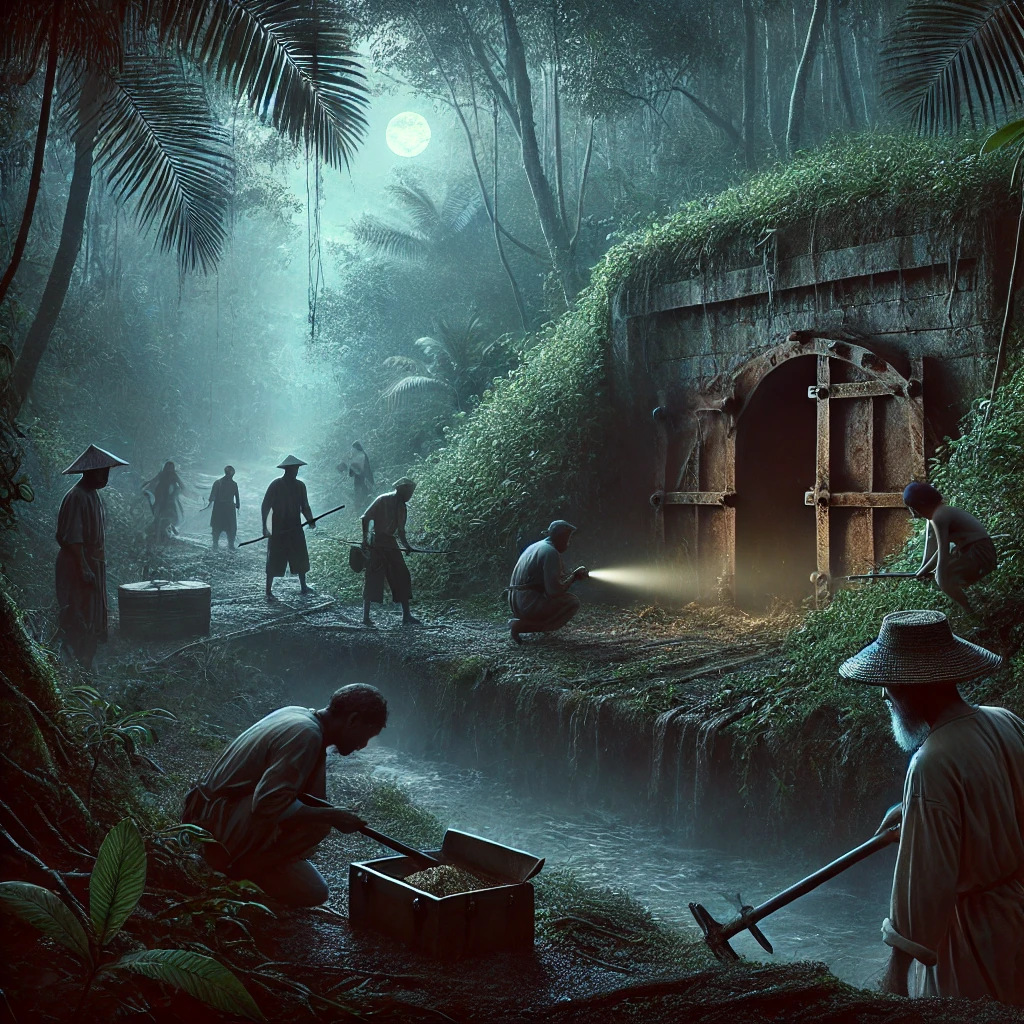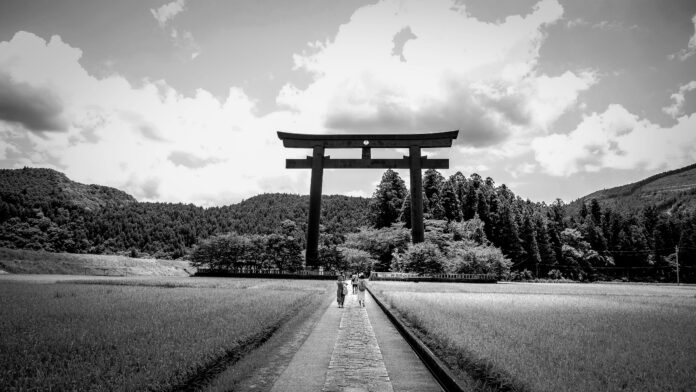In the shadowy depths of history, tales of lost gold and buried fortunes have long captivated the human imagination. Few stories are as enduring—or as elusive—as that of Yamashita’s Gold, the fabled treasure believed to have been hidden by the Japanese military across Southeast Asia during World War II. For decades, fortune hunters have scoured the Philippines for signs of looted gold, but what if they’ve been looking in the wrong place?
On the far edge of the Indian Ocean, in a forgotten corner of wartime history, lies a lesser-explored possibility: the Andaman and Nicobar Islands. These remote islands, once a strategic outpost for Japanese forces, are steeped in stories of hidden tunnels, lost wartime ships, and secret caches of wealth. Could this be the site of a second, unsearched trove of Japanese treasure?
A History of Looted War Gold
The idea of a massive wartime treasure isn’t without precedent. In Europe, the legend of Nazi Gold—wealth looted by the Third Reich and allegedly hidden in lakes, mines, and underground bunkers—has fueled speculation and real-world discoveries. One of the most famous cases is the Gold Train, a Nazi-era armored train believed to have disappeared in Poland carrying stolen riches. While no train has been found, treasure hunters continue to search for it.
In 2016, divers discovered a Nazi-era shipwreck in the Baltic Sea believed to be carrying crates of looted valuables. The Austrian salt mine of Altaussee, which the Nazis used to store stolen artwork, was another significant wartime cache, found intact in 1945.
The Andamans, controlled by the Japanese during the same period, share a similar wartime past. With known accounts of stolen gold being transported by the Imperial Japanese Army and their extensive use of underground storage facilities, the possibility of undiscovered treasure remains a tantalizing one.

The Andaman Connection
The Andaman and Nicobar Islands, a chain of over 500 islands stretching through the Bay of Bengal, have long been a place of exile and isolation. Before the war, the British used the islands as a penal colony, most notoriously housing political prisoners in the dreaded Cellular Jail in Port Blair. But in 1942, as Japan swept across Southeast Asia, the islands fell under their control.
For three years, the Andamans became an occupied military outpost, their jungles echoing with the march of Japanese troops. Soldiers built bunkers, airstrips, and underground shelters. A reign of terror unfolded—locals were forced into labor, resistance was crushed, and suspected spies were imprisoned or executed. By the time Japan surrendered in 1945, at least 2,000 civilians had perished under brutal occupation.
The history of wartime atrocities in the Andamans is well-documented. What remains a mystery, however, is what else the Japanese might have left behind.
A Missing Gold Trail?
During their occupation of Southeast Asia, Japanese forces looted vast quantities of gold, gems, and valuable artifacts from Burma, Malaya, and Singapore. Some of these riches were transported by ship across the Andaman Sea. The Andamans, positioned at a key maritime junction, were a natural stopover.
The theory that the Japanese may have hidden treasure here is based on several factors. The islands’ strategic location made them an essential transit point for wartime supplies and stolen valuables. The Japanese built an extensive network of underground bunkers, many of which remain unexplored. And the numerous wartime shipwrecks in the surrounding waters raise questions about what some of these vessels may have been carrying.
In the dense forests of Chidiya Tapu, local lore speaks of hidden tunnels once used by Japanese officers. Fishermen claim to have found rusted weapons and old coins in the sands of remote beaches. And on Netaji Subhas Chandra Bose Island (formerly Ross Island), where the Japanese had their headquarters, remnants of military structures hint at what might still lie beneath the earth.
If the Japanese did attempt to smuggle looted treasure through the Andamans, not all of it may have made it to its final destination. As Allied forces intensified their attacks in 1944 and 1945, several Japanese vessels were bombed and sunk near the islands. Among these wrecks are warships, transport carriers, and submarines—some of which remain unexplored to this day.
One such wreck, believed to be near North Bay Island, is rumored to have been carrying a significant cargo when it went down. Could this have included looted wealth? Without proper underwater exploration, the answer remains unknown.
Local Searches and Rumors
From time to time, local islanders have made makeshift arrangements to search for the fabled Japanese gold. These informal efforts have typically focused on areas near old Japanese bunkers, where underground tunnels and hidden storage chambers may still exist.
Rumors occasionally surface about gold being found in isolated bunkers—locations so remote and difficult to access that few have ever been able to verify such claims. Yet, despite these persistent whispers, there has been no concrete proof of treasure discovery. No official documentation exists in government records, and no significant find has ever been publicly acknowledged.
The fact remains that even if such a treasure were to be recovered, it would not be part of any personal property. If the discovery became widely known, it would likely fall under government custody. More importantly, one must remember that any such treasure was originally looted at the cost of countless lives. These riches sit on a history of bloodshed and suffering. If ever discovered, such a trove would not be a prize for an individual—it would be returned to its rightful owners or placed in the hands of the state.
The Mystery Remains
The legend of a hidden Japanese treasure in the Andamans remains just that—a legend. There is no hard proof, only whispers carried through time. Yet, history has taught us that sometimes the most extraordinary discoveries come from the most unlikely places.






